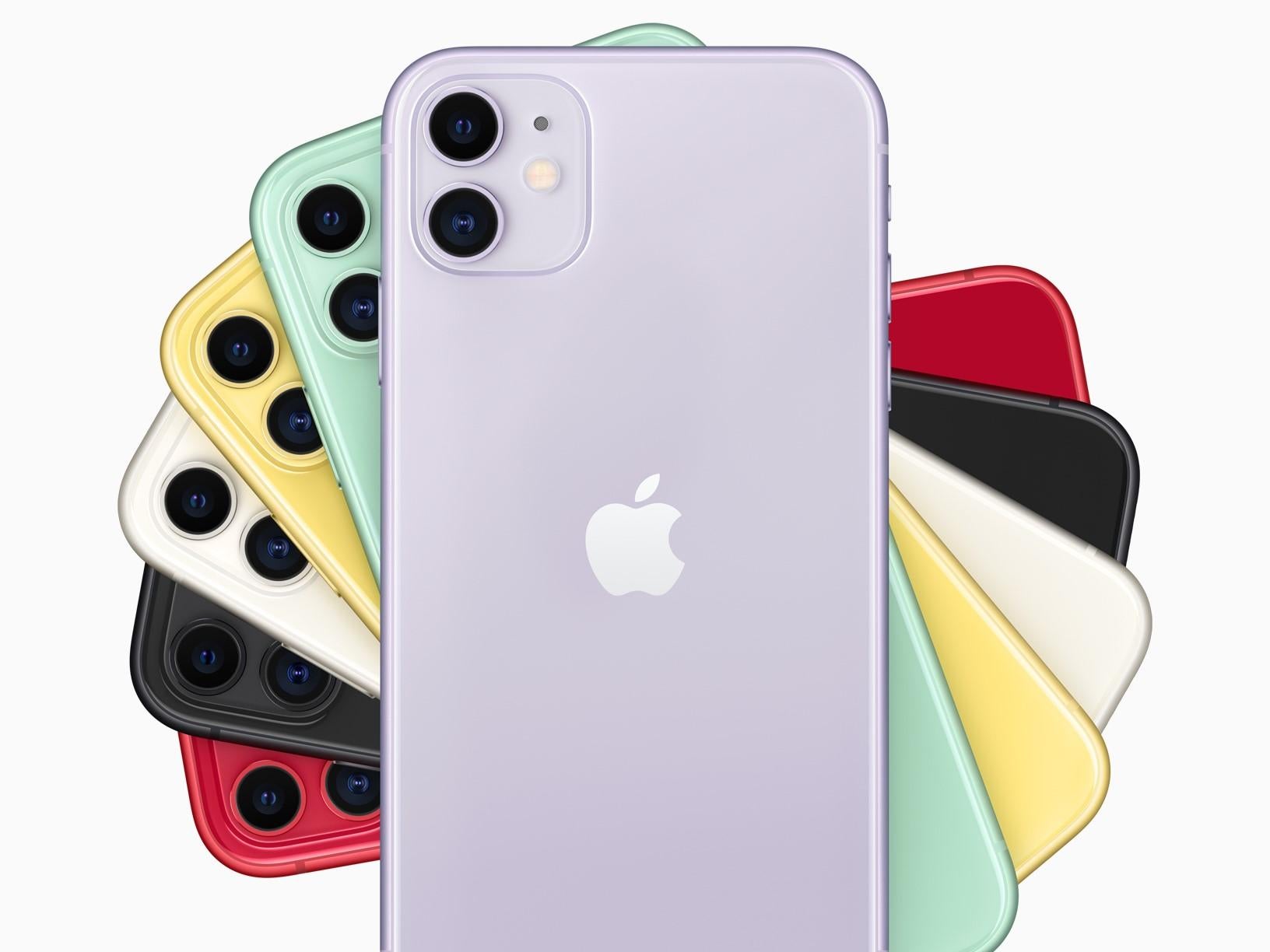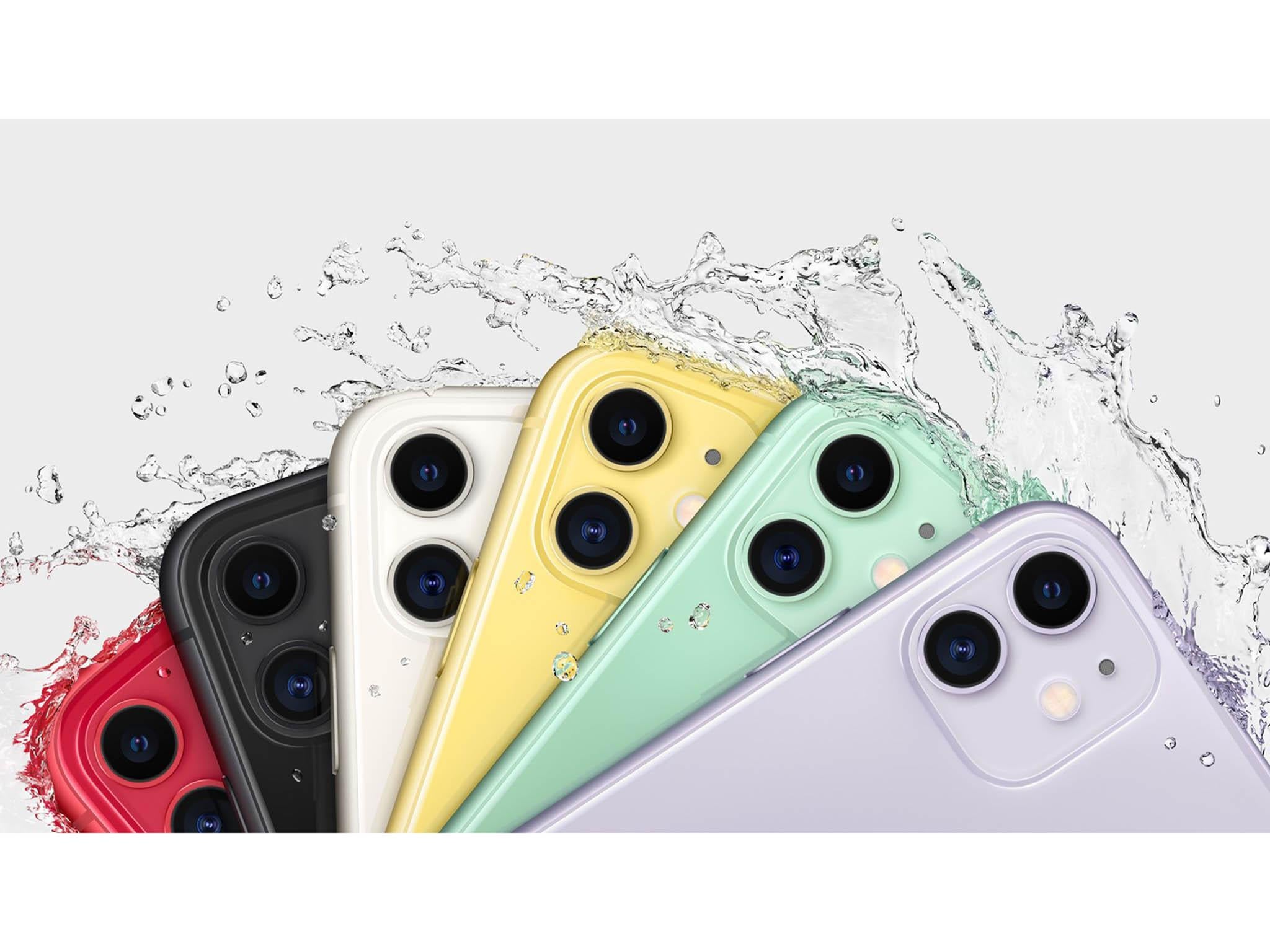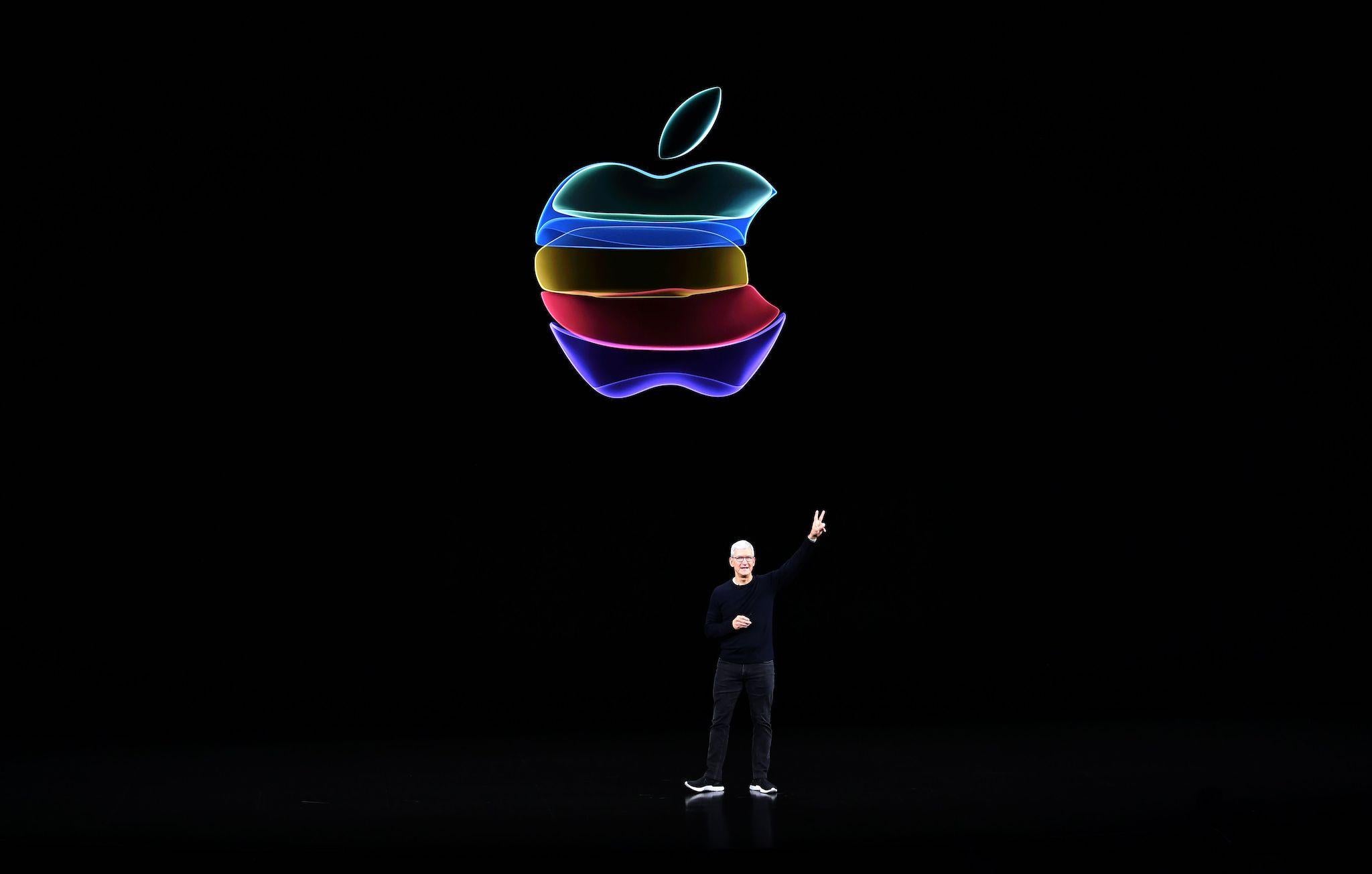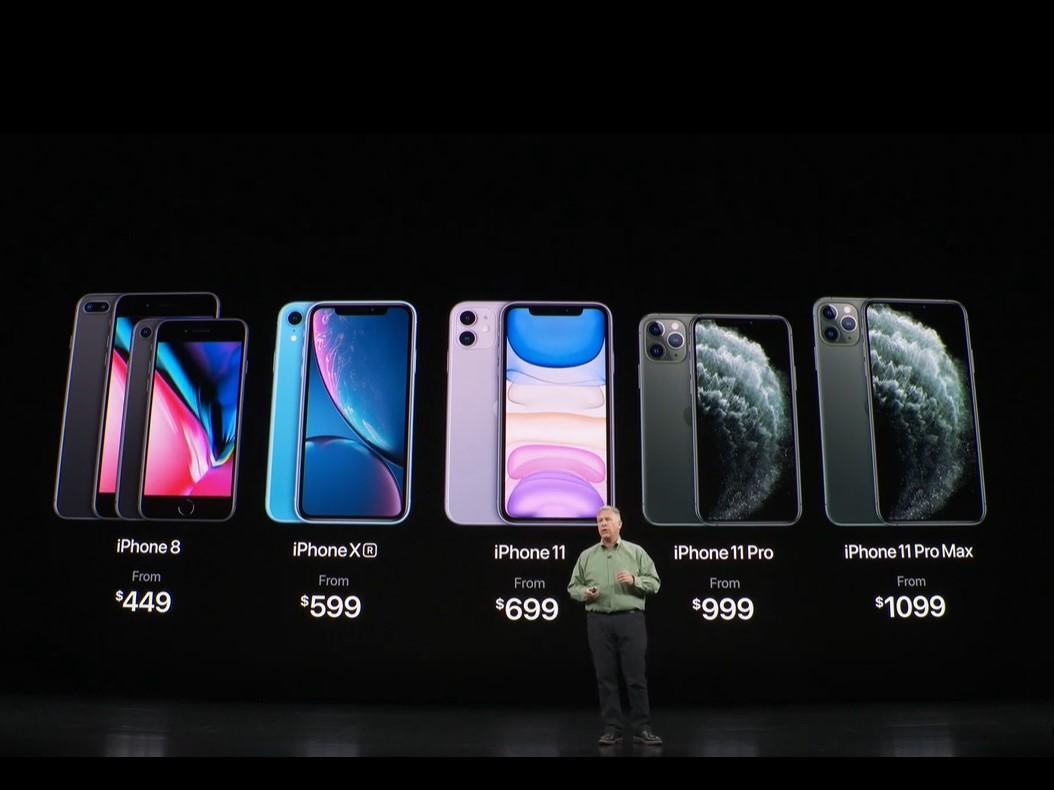iPhone 11 review: An eye-catching upgrade with only the odd disappointment
The newest iPhones have been revealed and go on sale on Friday. David Phelan has been testing the iPhone 11 for the last week

Three iPhones go on sale in a matter of days, promising improved photography, tweaked design, faster speed and something which may mean more than all of those to many: improved battery life.
The new phones are the iPhone 11, the iPhone 11 Pro and the iPhone 11 Pro Max, replacing the iPhone XR, iPhone XS and iPhone XS Max respectively.
There’s a new naming system, then. Last year, it was the iPhone XS that was the standard iPhone, with the XR seen as a cut-price alternative. Now, the successor to the XR is the definitive iPhone, simply called iPhone 11, with the iPhone 11 Pro and iPhone 11 Pro Max being presented as upscale versions. It’s a subtle repositioning.
All of which is fine, if the iPhone itself earns its consideration as the mainstream phone.
Design
The iPhone 11 is a direct successor to the iPhone XR in design terms. From the front, it looks identical to last year’s models, with a 6.1-inch LCD screen that goes to the edges all the way around. This is a significant achievement in itself – most LCD screens require wide bezels at top and bottom at least. Apple found a way to reach the edges with what it calls a Liquid Retina display on last year’s iPhone XR and it’s the same here. The screen looks great, though at 326 pixels per inch, it’s much less detailed than the Pro models. Sometimes text can look a little less sharp than you’d like but Apple’s new software design, such as the gleaming wallpapers, for instance, emphasise the strengths of the LCD so well, so it’s rarely an issue.
The newness in the design becomes apparent when you turn the iPhone 11 so you can see the sides. The XR was available in multiple colourful finishes and that’s the same here. This is visible from the edge because the aluminium antenna band which wraps around the phone is colour-matched to what’s on the rear of the phone.

The colours this time are all new. Four of the six are gently updated from last year’s black, white, yellow and red, all of which are slightly different from the iPhone XR. The other two are completely new: a green that has a minty vibrancy and a striking purple. It’s nothing like purple, in my book, but is a mouth-wateringly appealing lavender shade that looks great. It’s the standout among this year’s colours, I’d say.
The other changes to the design are on the back of the phone. First, the colours shine out brilliantly, with a polished-glass finish. Gloss all over apart from the camera bump which has a matte finish.
The camera bump had leaked in advance, or so we thought. But it turns out it’s very different from what was expected. The general belief was that it would be a deep, solid black bump with three flush cameras in, like the iPhone XS.
In fact, the lenses protrude, so the bump is much less dominant than expected and the area around the lenses is coloured to match the rest of the back of the phone, not black as on earlier multi-camera phones. These two design choices make the camera area look significantly better.
By the way, yes, multi-camera. Unlike the iPhone XR, with its single snapper, there are two lenses here – of which, more later. That’s the other big change to the look of the back of the phone, though there’s one more noticeable difference.
On iPhones up until now, the back has always featured the Apple logo, the word iPhone and the words “Designed in California” and “Assembled in China”. In some “S” years, that letter would be there, too. There was also the CE mark and a do not recycle graphic.

Apart from the Apple logo itself, everything else has now gone. The logo has moved down the back to a more central position. As a result, it looks much cleaner, more elegant.
In the hand, the iPhone 11 feels great. Despite its large display, it’s comfortable even in smaller hands and the smooth edges mean you can roll it through your fingers satisfyingly.
The detailing is remarkable, as you would expect from Apple. The volume buttons, power button, mute switch and even the inside of the Lightning charging socket are perfectly colour-matched to the rest of the phone.
Cameras
The cameras here are both 12MP sensors, one wide and one ultra-wide. The iPhone 11 is significantly cheaper, £270 less than the iPhone 11 Pro, with pricing starting at £729. Last year’s iPhone XR, by the way, is still available and has dropped in price to £699.
Despite the price difference there is a lot the iPhone 11 and iPhone 11 Pro share and that includes the cameras. These are identical to two of the iPhone 11 Pro’s three cameras – the Pro also has a telephoto lens.
Two lenses mean that portrait mode with its sharp-focus-subject-blurred-background effect is now here with a vengeance. It was possible on the iPhone XR through software but that meant objects and, more importantly, pets didn’t register. It needed a pair of human eyes to work. Now, portrait mode works for everything. There’s also a high-contrast black-and-white mode that’s especially eye-catching.
A new camera interface means the phone shows you what the wide lens sees and around the edges to fill the display with what the ultra-wide would see, if you were using that. If you decide it’s a better shot, you can switch to it. It’s a useful system and my only disappointment is that when you do flick to the ultra-wide, it no longer occupies the whole screen. However, that wouldn’t show everything the camera can see, so it’s unavoidable.

There’s also a new night mode which activates automatically when light is low. You can turn it off, but the results are mostly outstanding, so it’s worth letting the iPhone do its stuff. It takes multiple shots and puts them together to create an improved result. The shots are taken over a second, sometimes longer and a slider counts it down for you.
The images are realistic, not impossibly bright and still catch the feeling of the moment. On a couple of occasions I found the colours were a little different from what my eyes saw but this was the exceptional, not the commonplace, result.
The camera interface is also improved with a swipe mechanic on the screen to reveal extra menu options.
The front-facing camera is now 12MP, too and comes with a wider field of view. When you turn the iPhone to landscape orientation, the camera knows to automatically choose that wider view. Apple also announced the slofie (I know, I know) which stands for slow-motion selfie video shot at 120 frames per second. These are actually quite fun.
All these features are on the Pro phones, too, but for many, the iPhone 11 camera will be more than good enough.
Battery life
This is a major upgrade on all the new iPhones. The iPhone XR already had the best battery life of any iPhone and this one adds an extra hour to that. It’s hard to pin down exactly how many hours that really means, but in my testing, it has lasted from early to late every single day. This is a super-refreshing change. I’d still recommend nightly charges for peace of mind, but this is a big step forward. Anyone nursing an iPhone 7, say, whose battery may be needing a little boost during the day, will enjoy what the iPhone 11 has to offer.
Performance
The release of iOS 13 on Thursday 19 September brings more features. There’s the dark mode which has proved highly popular, offering a less in-your-face design with black backgrounds instead of white. On the Pro phones with their OLED screens that will offer power saving, but not with LCD. Here it’s a clean, attractive look.
Face ID, the fast, reliable and secure facial recognition system introduced on the iPhone X, is more effective now and works at more angles, so you don’t have to crane your neck forward when it’s on your desk, say – though you do still have to lean in. This improvement will also happen on the other Face ID iPhone models as it’s software-based.

The processor, called A13 Bionic, is blisteringly fast. Right now, it’s easy to notice how quickly apps launch and respond when in use but as developers create more demanding apps, expect the new processor to step up to the plate.
Note that the splendid 3D Touch effect of the iPhone X and XS is not here. That’s the subtle haptic feedback you get when you touch certain menus. It was replaced on the iPhone XR by Haptic Touch which works in a different way. Previously, Haptic Touch was limited in what it did but it’s now been expanded to wherever 3D Touch went. Haptic Touch is now on the Pro iPhones, too. You can feel a difference and it doesn’t feel quite as nippy as 3D Touch, but on the whole, I forgot about the change pretty much instantaneously.
Verdict
The new design is a gentle update, but the new iPhone is still a triumph thanks to its snazzy colours, great feel and super-fast performance. Though the display isn’t a match for the Pro models it’s still fine and works well. The considerably extended battery life will be enough to justify an upgrade for many, and the extra upgrades such as the truly excellent cameras may seal the deal.
Join our commenting forum
Join thought-provoking conversations, follow other Independent readers and see their replies
Comments